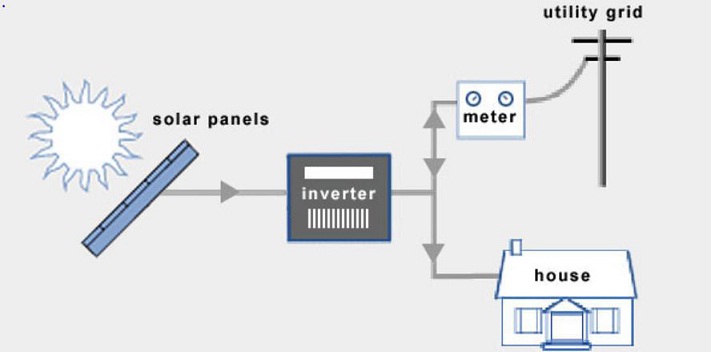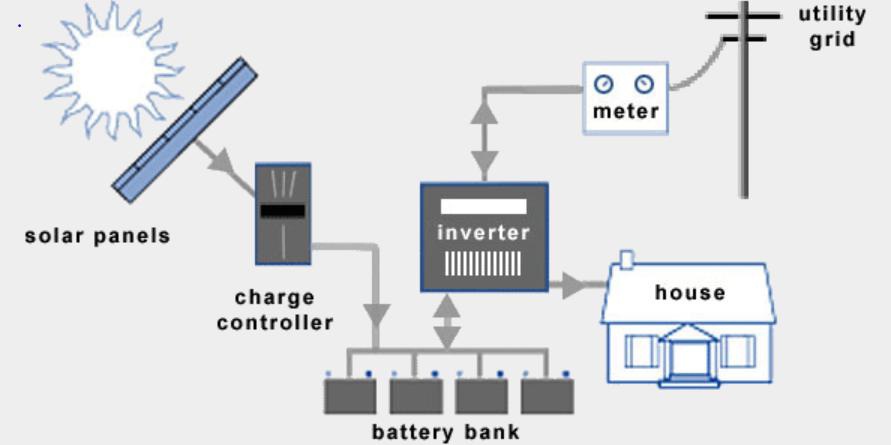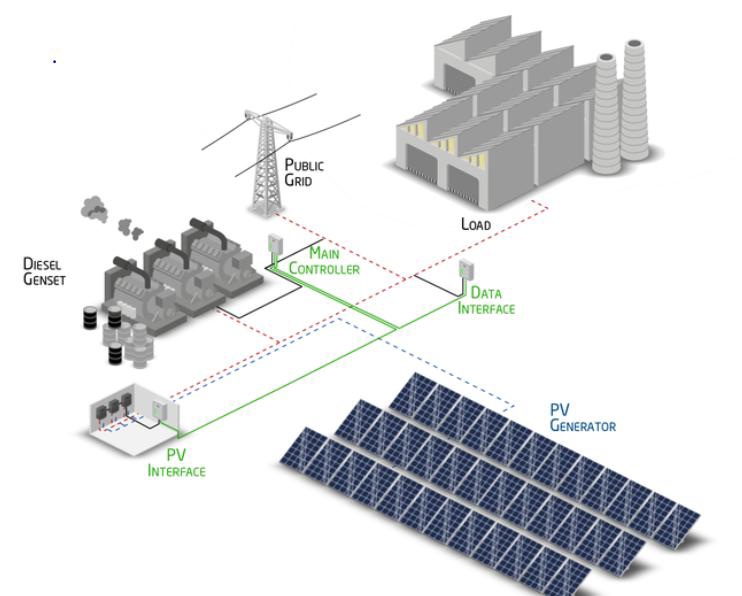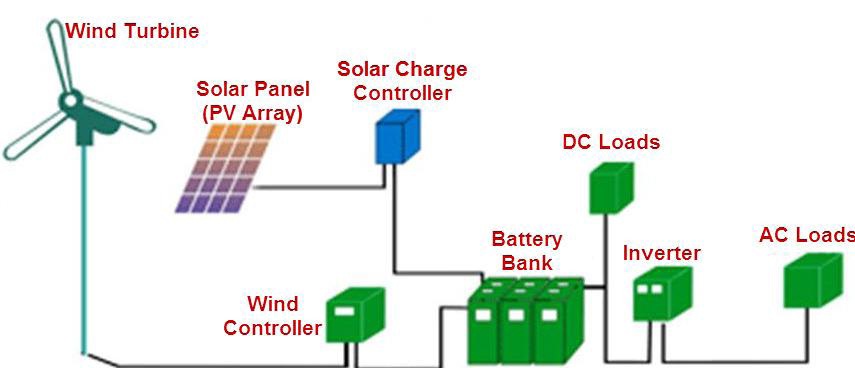





Published on Feb 14, 2025
Now a day’s electricity is very important facility for the human being. All the conventional energy resources are changing day by day. So we have to move from conventional to non-conventional energy resources. So we move toward solar energy. This process converts the sustainable energy resources without damaging the nature. Solar energy converted into electricity by using solar panels. This electrical power can utilize for various application. Generation of electricity will be takes place at low cost. Without damaging the nature balance, this paper deals with the generate electricity with affordable cost.
Solar energy systems come in various configurations, and the choice is yours whether you go off the grid or stay on the grid. This paper discusses the advantages of a Solar hybrid system, grid tied solar system and standalone solar systems (or Off-Grid solar systems). Grid-tied, on-grid, utility-interactive, grid intertie and grid back feeding are all terms used to describe the same concept – a solar system that is connected to the utility power grid.
Grid-tied, on-grid, utility-interactive, grid intertie and grid back feeding are all terms used to describe the same concept – a solar system that is connected to the utility power grid.

As it does not require battery banks and other standalone components, it is relatively cheaper than Off-Grid or hybrid systems.
It facilitates you to take advantage of net metering. Any extra electricity that you produce can be sold back to the utility. This means that by the end of the month, you only pay for the net kWH electricity used.
Since you do not have a battery bank, you can’t store electricity. If during the night, your grid is down, you will not have any electricity.
Utility companies charge monthly fees that you’ll need to pay.
To ensure access to electricity at all times, off-grid solar systems require battery storage and a backup generator (if you live off-the-grid). On top of this, a battery bank typically needs to be replaced after 10 years. Batteries are complicated, expensive and decrease overall system efficiency.
Only option if you live in a remote area with no grid access
Feeling of being self-sufficient for your energy demands is great. Grid failures and downtime won’t affect your power supply
The additional costs of installing a battery bank, and in some cases an alternative source of power like a diesel generator, makes these systems more expensive than a grid tied system.
Standalone systems have more components and therefore need more maintenance. Especially the batteries need regular care.
Replacement of battery banks is another problem. Battery banks are designed to last for 7-10 years after which they need to be replaced. This is a cost that you need to take into account.
Hybrid solar systems combines the best from grid-tied and off-grid solar systems. These systems can either be described as off-grid solar with utility backup power, or grid-tied solar with extra battery storage.

You can switch between power from the grid or power from your battery bank at you own will.
Less expensive than a complete stand alone system, as there is no need for a backup generator. The possibility to connect to the grid serves as the backup power.
Availability of the grid means that you can likely downsize your battery bank capacity.
Less maintenance and higher reliability IF the grid is reliable.
Cannot be used in remote areas where there is no grid power
PV-diesel-hybrid-power plants without storage have rather low capital requirements. In the picture there is an option to connect the plant to the grid, which is applied in regions with an unstable grid. In the typical off-grid solution, the electricity from the solarpower plant is used with priority, the diesel gensets generate the missing gap between the solar output and the load from the mine

The hybrid off-grid power plant without storage requires rather low investment costs. As neither solar nor wind energy are a stable source of energy and diesel gensets need a certain time for start-up, this solution normally requires the gensets to run constantly at least at a minimum load
Solar-Wind hybrid Power system is the combined power generating system by wind mill and solar energy panel. It also includes a battery which is used to store the energy generated from both the sources. Using this system power generation by windmill when wind source is available and generation from PV module when light radiation is available can be achieved. Both units can be generated power when both sources are available. By providing the battery uninterrupted power supply is possible when both sources are idle

Uganda Presently, hybrid systems in the 5 kWp range have been implemented at rural district headquarters and at a few industries. The deployment of this technology is still at the infant stage. The Rural Electrification Strategy and Plan established in 2011 aims to connect over 500,000 new electricity customers to the main grid, independent grids, and to solar PV systems, with the support of local institutions (Rural Electrification Fund, Rural Electrification Board and Rural Electrification Agency). These institutions are willing to promote PV / diesel hybrid technology. REA has budgeted for feasibility studies in 2011-2012 for hybrid solutions in Koome and Buvuma Islands (hybrid systems with wind, solar and diesel sources). Kenya In 2011, a PV / diesel hybrid power plant was implemented (10 kWp PV, 80 kVA diesel).
It was the first of its kind in the country, with the implementation managed by KPLC. Burkina Faso Burkina Faso’s Fund for the Development of Electrification has initiated a project in 2012 to add a solar PV component to existing diesel power plants in the Sahel region. A previously installed PV array at the diesel plant in a remote locality in Sahel will soon be connected to the main grid. Madagascar In 2010, two hybrid systems based on PV were implemented: One funded by the government (7 kWp PV, 12 kW diesel) and one by the African Development Bank (8 kWp PV, 100 kW diesel).
Among the three options that are available, the grid tied captive systems are the most prevalent in India. These are available up to a capacity of 100 kW, and typically do not use batteries. At the same time, stand alone/captive based power plants in India are evolving fast. Globally, most people do not run their entire load solely off their PV system. The majority of systems use a hybrid approach by integrating another power source. The most common form of hybrid system incorporates a gas or diesel powered engine generator, which can greatly reduce the initial cost. Meeting the full load with a PV system means the array and batteries need to support the load under worst-case weather conditions. This also means the battery bank must be large enough to power large loads. These requirements will make the system unviable owing to the high costs of battery storage.
Hence, a diesel-solar PV generator provides the optimal power supply source for India as well, as the generator provides the extra energy needed during cloudy weather and during periods of heavier than normal electricity use, and can also be charging the batteries at the same time. A hybrid system provides increased reliability because there are two independent charging systems at work. Another hybrid approach is a PV system integrated with a wind turbine. Adding wind turbine makes sense in the locations where the wind blows when the sun does not shine. In this case, consecutive days of cloudy weather are not a problem, so long as the wind turbine is spinning. While in theory this combination appears good, in practice this combination has not delivered the benefits expected out of it, primarily owing to the less-than-optimal efficiencies of micro wind turbines. For even greater reliability and flexibility while using wind and solar, there are experimentations where a third source – diesel generator – has been included in a PV/Wind system. A generator system will act as a third charging source for the batteries. This three-source hybrid is in its nascent stages in India.
The hybrid system will bring enormous benefit to the rural and remote areas of India where there is severe crisis of reliable supply of electricity. The study clearly shows that the optimized wind-PV-diesel hybrid system is more cost effective in terms of Cost. The system will reduce the CO2 emission by several percentage thus bringing a local as well as a global carbon benefit. The potential of the system will promote socio-economic development to the local people by getting longer hours of electricity supply after sunset which will help the students to study more as well as local businessman to earn more. Technology transfer and capacity building have also been developed in implementing combined renewable-fossil fuel power plants. However, the effectiveness of the hybrid system is promising enough that further analysis can be made to collect the additional data to perform a more detailed analysis.
[1] "Hybrid power plants (wind- or solar-diesel)". TH-Energy.net – A platform for renewables & mining. Retrieved 12 May 2015.
[2] J.Godson1,M.Karthick2,T.Muthukrishnan3,M.S.Sivagamasundari, “SOLAR PV-WIND HYBRID POWER GENERATION SYSTEM”, ISSN ONLINE(2278-8875) PRINT (2320-3765)
[3] Arjun A. K., Athul S., Mohamed Ayub, Neethu Ramesh, and Anith Krishnan,” Micro-Hybrid Power Systems – A Feasibility Study”, Journal of Clean Energy Technologies, Vol. 1, No. 1, January 2013,pp27-32.
[4] J.B.V.SUBRAHMANYAM, P.K.Sahoo and Madhukarreddy,” Local PV-Wind hybrid systems development for supplying electricity to industry”Acta Electrotechnica,Vol.53,No.1,2012,pp10-15
| Are you interested in this topic.Then visit the below page to get the full report |